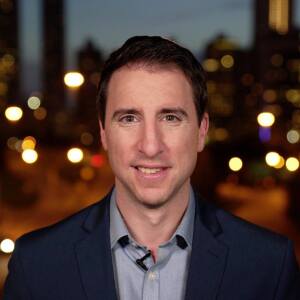We saw it in the census: our country is growing much more diverse. Groups that used to be in the minority are, in some places, the majority. Communities that once barely had a voice are finding one. But that doesn’t mean they are always included, and many will tell you it’s the opposite.
As the mayor of an almost entirely Black city, Union City Mayor Vince Williams realized he wasn’t doing enough for the Hispanic minority in his community, so he met with them personally and pledged to represent their voice. His message about inclusion, and the simple value of listening, is one he says any city can follow.
Lorena Chavez says she likes living on Raymond Drive in Union City, Georgia, but she still misses her country.
“It’s sad leaving your family, your parents, and your siblings. It would be nice if they welcome us here, welcome us with warmth,” she said.
Chavez lives at one end of Raymond Drive. Maria de Santos lives at the other. They are both parents and both relatively new to America. Neither of these women rarely leaves their block.
In a city of 26,000, it’s easy to overlook one road.
“This is a community like every community in America. Everywhere you go in America, there is a Raymond drive,” Mayor Williams said.
Union City, Georgia is a suburb of Atlanta. The city is almost entirely Black except for the largely Hispanic community Mayor Williams met knocking on doors on Raymond Drive.
“I never knew about Raymond Drive. It was kind of off the beaten path,” Williams said. “A lot of the families that were in the area were peeping out of the windows and wouldn’t come to the door.”
At the time, Williams says he promised himself he’d use his power to build trust with an overlooked group. Then he got elected. He admits he lost track.
“How disappointing for me as an African American mayor, in a predominantly African American community of color, to have another community within our community, and I don’t address the needs of that. That’s equity,” Williams said.
For the past year, Mayor Williams and Spanish-speaking staffers have gone into the community, trying to bridge gaps and trying to listen.
Atilio Negron is a resident, who is determined to bridge the gap.
“We need to have feelings for people. It doesn’t matter if you’re rich or you’re poor. It’s people. We’re talking about real people,” Negron said.
Chavez wants to see streetlights and sidewalks. De Santos wants a pathway to employment. They both have concerns with safety, slum lords, and security for those who are undocumented. This past July, the city held a block party at the edge of Raymond Drive. They brought food trucks and ice cream, t-shirts, and music. Mayor Williams says it’s an example of what’s to come. He hopes his city will be one, too.
For now, Chavez watches the chickens run around next door. De Santos tends to the flowers she planted in front. Both embrace their block. Both hope to, one day, embrace all that surrounds them.






